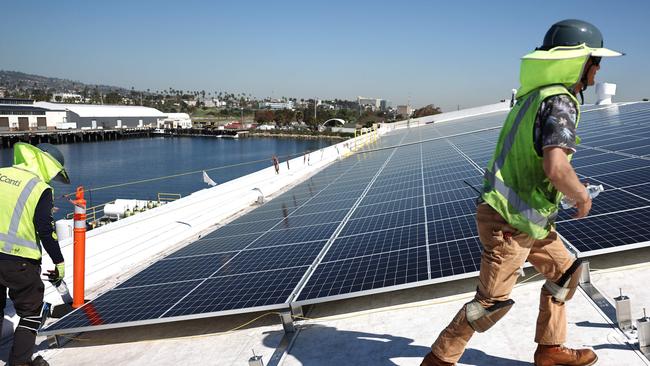Transition momentum must not be sacrificed

There will be a federal election in 2025. Cost-of-living will be the No.1 issue for voters.
In all the inevitable politicking the Labor Party must walk and chew gum – continue to govern in the long-term interests of the Australian people, and campaign to keep the job for another three years.
In their bid to differentiate themselves to voters, all parties must keep sight of the fact that the energy transition challenges are made greater by the lack of bipartisan agreement on energy policy and strategic direction.
And vote buying cannot lead to knee jerk route changes in energy policy.
Last year we saw a seismic shift in federal and state policies and developments. This has led to: unprecedented growth (18 per cent between Q4 2023 to Q3 2024) in large-scale solar and wind generation.
These facilities now account for 34 per cent of Australia’s generation capacity, contributing to record periods of instantaneous penetration above 74 per cent.
This means that our dependence on coal is in decline. Thank goodness. Our ageing, expensive and dirty coal-fired power stations are on their last legs, and most will reach the end of their lives in the next six to seven years.
Technological advancements are playing a crucial role in the transformation. Innovations in energy storage, grid management and energy efficiency are now available and more commercially viable to be deployed at scale to solve our energy reliability and security problems.
Despite these successes, the challenges we are facing are still huge.
We will need a lot more large-scale renewable generation and storage. We must ensure it is built and connected in time to ensure reliable power supplies and avoid continued reliance on expensive fossil fuels.
And to that point, the transmission infrastructure build-out continues to be the missing link in the transition. Our modelling shows that delays to these build outs are directly (and likely indirectly) costing families and businesses.
What’s more, decisions such as that of the NSW government to extend and prop up the Eraring coal-fired power station for years longer than necessary deter investment in renewables. And as we have seen, they aren’t even a good Band-Aid – with four of 12 coal units out of action when they were needed most.
On the flip side, Australians though are signalling loud and clear that they want the energy transition done. They are “voting with their rooftops”!
Australians lead the world in rooftop solar.
More than one-third of homes nationwide have solar panels installed. Some of us invest in it to save money, some to take action on climate change, and others to reduce dependence on the big energy retailers.
But no matter the reason, every time a new panel goes up we all benefit because it lowers wholesale electricity prices and reduces carbon emissions.
Australian families and businesses have created a “rooftop solar juggernaut” that is already playing a significant part in our energy mix.
Governments, authorities and industry have a choice – are we going to be in the passenger seat beside them, empowering, navigating the shortest route, and helping keep them safe?
Or are we going to stand on the side of the road and get mowed down?
So what must be done in 2025?
Regulatory “tinkering” has been a mainstay of the energy transition over recent years; we are now at an inflection point. We need future-focused reform of the National Energy Market.
We must have incentive schemes, tariffs and packages designed to accelerate the adoption of rooftop solar and batteries by families and businesses.
We must ensure transmission is built on time.
Transmission companies (currently the regulated monopolies) need to be held accountable – they must know they face meaningful penalties if projects are not delivered on time.
Investors need certainty. This means coal closure dates that are baked in, removing the unnecessary planning and approvals red tape for projects, and ensuring there is clear governance and bipartisan policy with enduring investment signals, so we are not having the same debate every three-year election cycle.
None of this is easy. And the cold hard reality for politicians is that there is not a way to do this where everyone wins.
Yes, we do need to get better at taking people on this journey, including those that are directly impacted by some of the infrastructure – and we must support the vulnerable to through this change.
However, the time for waiting until everyone is on board is over.
Twenty-seven million people need this change.
Stephanie Bashir is the chief executive of Nexa Advisory



In 2024, Australia finally achieved some momentum towards our target of 82 per cent renewables generation by 2030.